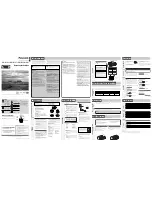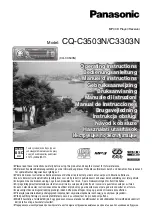
● Dimension: 46.5*26.3*14.7mm (L*W*H)
● Weight: 13g
● 10 Configurable Channel Ports
CP1: PWM / SBUS Out / FBUS / S.Port / SBUS In
CP2-10: PWM / SBUS Out / FBUS / S.Port
Specifications
Version
1.0
Instruction Manual for FrSky ARCHER PLUS SR10+ Receiver
FrSky Electronic Co., Ltd. www.frsky-rc.com Contact us : [email protected]
Add: F-4,Building C, Zhongxiu Technology Park, No.3 Yuanxi Road, Wuxi, 214125, Jiangsu, China Technical Support: [email protected]
Version
1.0
Instruction Manual for FrSky ARCHER PLUS SR10+ Receiver
FrSky Electronic Co., Ltd. www.frsky-rc.com Contact us : [email protected]
Add: F-4,Building C, Zhongxiu Technology Park, No.3 Yuanxi Road, Wuxi, 214125, Jiangsu, China Technical Support: [email protected]
Version
1.0
Instruction Manual for FrSky ARCHER PLUS SR10+ Receiver
FrSky Electronic Co., Ltd. www.frsky-rc.com Contact us : [email protected]
Add: F-4,Building C, Zhongxiu Technology Park, No.3 Yuanxi Road, Wuxi, 214125, Jiangsu, China Technical Support: [email protected]
Version
1.0
Instruction Manual for FrSky ARCHER PLUS SR10+ Receiver
FrSky Electronic Co., Ltd. www.frsky-rc.com Contact us : [email protected]
Add: F-4,Building C, Zhongxiu Technology Park, No.3 Yuanxi Road, Wuxi, 214125, Jiangsu, China Technical Support: [email protected]
Introduction
Overview
46.5mm
14.7mm
26.3mm
10
9
10/24CH Telemetry & Stabilization
2.4G Antenna
2.4G Antenna
AIN2 (max: 35V)
(Upgrade)
Working State
ON
OFF
Flashing
exceeding limits (0.9G,1.1G)
In normal status
Calibration is completed
Yellow LED State (Calibration of Accelerometer) Blue LED
ON
OFF
Flashing
State (Self-check)
Center detection of
channel in progress
Self-check is completed
Max & Min of
channels in detecting
Status
Register
Register successfully
Bind
Work Normally
Failsafe
Red LED
On
Flash
Off
Off
On
Green LED
On
Flash
On
Flash
Off
Gyroscope Sensor Calibration
Attentions
CH1~CH8 should be connected to the corresponding servos.
Number of
Channel
CH1
CH2
CH3
CH4
CH5
CH6
CH7
CH8
CH9
CH10&CH11
CH12
Corresponding parts
on the model
AIL 1
ELE 1
THR
RUD
AIL 2
ELE 2
User-defined
User-defined
No mark
No mark
No mark
Full name
Aileron
Elevator
Throttle
Rudder
Aileron
Elevator
Gyro gain adjustment
Flight modes
Emergency mode
Gyro gain adjustment of CH9: When the the value of CH9 is in the center, the gain is zero. The gain increases as
the value get bigger. Until the value is ±100%, the gain reaches maximum.
Note: CH9~CH12 are not marked on the diagram.
CH9 Edit - Setting CH9 at Weight 50 and offsetting 50, the assigned pot/slider will work normally.
Connect the servos to the ports of the stabilization device according to the Channel List.
Please make sure the receiver antenna forwards the nose direction, and with receiver pins backward
Servo connection & Build the stabilization device to the model
[Device Configuration] → [SxR]
[SxR Enable] → [On]
Move to [SxR Calibration] tool and calibrate the gyroscope sensor of the receiver.
Ensure the SxR stabilization function is enabled.
1. The gyroscope of receiver (6 surfaces) must be calibrated before mounting into the model. Please place the
receiver on a flat ground or a table, and follow the instruction steps below to calibrate the gyrosope sensor;
2. Make sure the receiver with the LOGO sticker side facing upwards laying on the desktop, move to the radio
and enter the [SxR calibration] tool, and select "click to confirm". At this moment, the yellow LED light will flash
until it lits off, then follow the prompts to calibrate the sensor;
3. Complete the calibration of all the receiver surfaces. Ensure the values of each axis (X, Y, Z, Mod) is about
1.000 while placing the receiver in the corresponding direction, and the deviation could be ±0.1;
4. The calibration is completed if all the steps above are done.
The Archer line of receivers has been enhanced further with the addition of the new Archer Plus Series.
The Archer Plus Series receivers include some new features. Firstly an enhanced anti-RF-Interference capability
can offer a more solid RF performance, and this is in addition to existing anti-interfere performance in the spark
ignition process. These Plus series receivers are also with both ACCESS and ACCST D16 modes, where the RF
protocol is smart matched during the binding process on the radio. With the Black-Box function, some basic flight
data (like Power & Signal related) can be well preserved.
The Archer Plus SR10+ are gyro-stabilized receivers with a built-in 3-axis gyroscope and 3-axis accelerometer
and feature multiple flight modes (Auto-level, Stabilization, Knife-Edge, etc.) and configuration methods. The
SR10+ receivers have 10 configurable channel ports, each channel port can be assigned as PWM, SBUS, FBUS,
or S.Port.
The SR10+ supports full-range signal strength with dual detachable antennas and guarantees optimal antenna
reception and range. The SR10+ can be used as a Primary receiver in a redundant solution by setting a port as
SBUS In and connecting to any other FrSky receiver equipped with an SBUS Out port. With the FBUS protocol,
the Archer Plus series receivers can open up the possibility of seamlessly pairing with multiple telemetry devices
(XACT servos, ADV Sensors, etc.) as well as simplifying the builds setup.
Follow the step below to finish the registration & binding procedure:
1. For TANDEM X20 as an example, enter into the Model, select RF System, turn on the internal module, select
status [ON] and ACCESS, Then determine the antennas (internal or external) and choose the RF power
according to the actual usage, the ACCESS receiver can be registered to the radio at the moment. (Notice: the
"Registration" process is not required while binding the receiver in ACCST D16 mode.)
2. Connect the battery to the receiver while holding the button on the receiver. The RED LED and GREEN LED
on the receiver will be on, indicating into the [Reg] status.
3. When it shows the Register ID, RX name and UID, click [Register]. The RED LED and GREEN LED on the
receiver will flash, and the transmitter displays [Registration OK ].
4. Power off the receiver.
5. Move the cursor to select any one of the 3 receivers and press [Bind].
6. Connect the battery to the receiver.
7. Select the RX, the GREEN will keep lit, then the transmitter displays [Bind successful].
Registration & Automatic Binding
Note: Once the receiver is registered, the button is not needed anymore in the binding process (ACCESS mode).
Basic Step Guides
a. Model creation & Receiver binding;
b. Ensure stabilization is enabled & Calibrate the gyroscope sensor of the device;
c. Servo connection & Build the stabilization device to the model;
d. Set up the receiver channel and radio switches;
e. Determine the [Wing Type] & [Mounting Type];
f. Check the stabilized channel outputs of the receiver in the Auto-Level mode;
g. Check the stick control of the transmitter in the manual mode;
h. Self-Check of the receiver;
i. Failsafe setting.
● SBUS Out (Supports 16CH / 24CH mode)
● Operating Voltage Range: 3.5 -10V
● Operating Current:
<
100mA@5V
● Control Range: Full range* with telemetry
(*Full Range:
>
2km, range may vary based on local conditions.)
● Voltage Measurement Range via AIN2 (External device): 0-35V
(Battery Voltage Divider Ratio: 1:10)
● Compatibility: FrSky 2.4GHz ACCESS / ACCST D16 capable transmitters
Features
● Enhanced Anti RF-Interference capability with more solid RF performance
● Smart-matched ACCESS & ACCST D16 modes
● Supports basic Black-Box function
● Built-in 3-axis gyroscope and 3-axis accelerometer sensor
● Multiple flight modes and configuration tools (ETHOS, LUA scripts, etc.)
● 10 configurable channel ports (PWM, SBUS, FBUS, or S.Port)
● Supports signal redundancy (SBUS In)
● Full control range with telemetry (S.Port or FBUS)
● Anti-interference capability in the spark-ignition process
● Over-The-Air (OTA) FW update
● External battery/device voltage detection





















